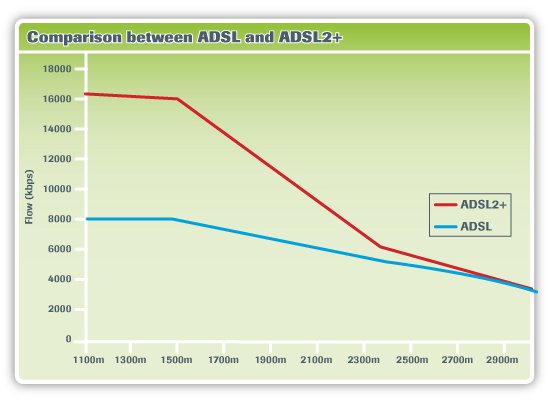Internet access through the use of ADSL2+ technology has been the standard in France for many years now. Independant players have taken hold of parts of the market by offering Internet service at 29 euros ($45.14 CAD). Gradually, they added Voice over IP services (VoIP ) and a television signal ( IPTV ), commonly called a ‘triple play’. This trend greatly affected France Telecom, which occupied more than 44 % of the market. In Quebec, Bell and Vidéotron hold 95 % of the market. Several French independant telcos have greatly grown: Free communication, which now counts 2 million members, Alice, n9uf etc. In France, the triple play costs 29 euros, or $50. In Montreal, ADSL2+ technology is deployed by the installation of its own hookup panels in Bell’s exchange.
This technology confers a clear advantage within 4 km ( 13 000 ft ) of the telephone exchange, while at 2,7 km ( 9 000 ft ), the speed may remain at 2,5 Mbps. Below, a theoretical chart that does not take into consideration poor quality cables. For residents of central Montreal living less than 2 km from the telephone exchange, this may be a great advantage.

Since the beginning of DSL < Digital Suscriber Line > a decade ago, transmission standards have evolved and a copper wire now allows for the transmission of packets at high speeds. However, distance from the telephone exchange remains a major issue.
ADSL2+
The ADSL 2+ evolved from the ADSL technology, and it uses more data carrier frequencies. This leads to an increase in the possible bandwidth. However, the improvements to ADSL are noticeable only if the subscriber is closer than 2 000 m from the telephone exchange. Further, the speed is similar to ADSL.